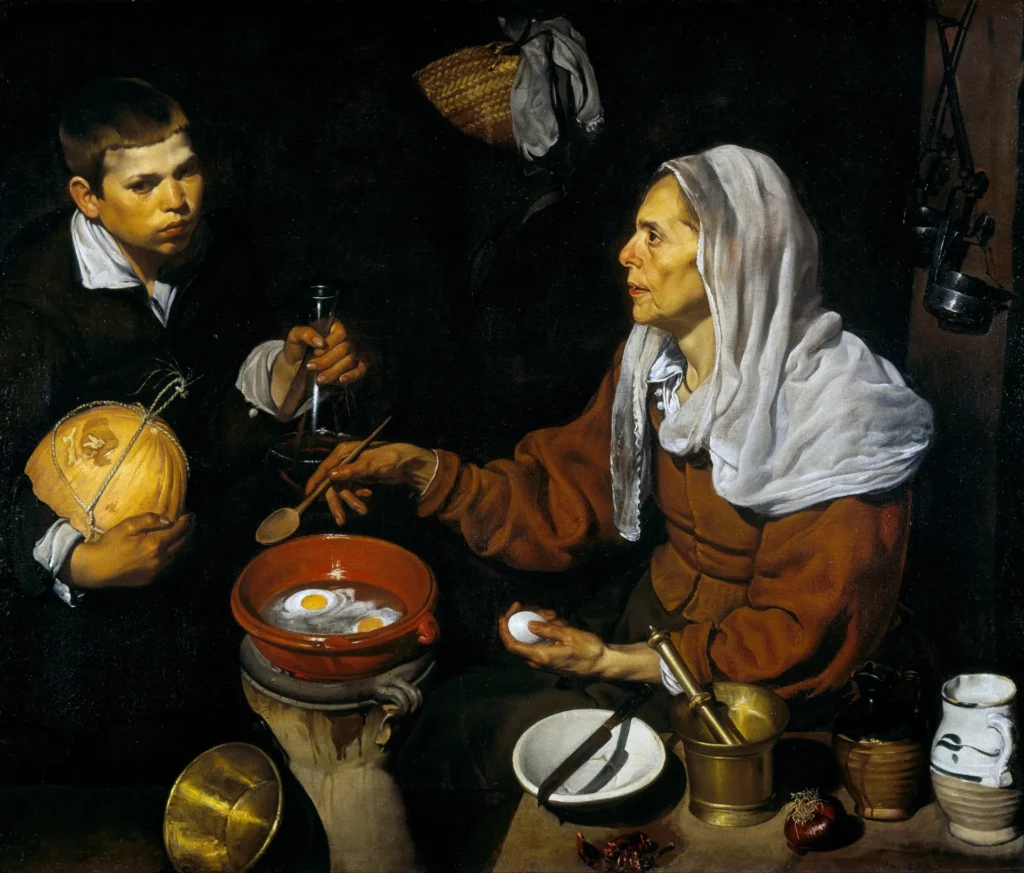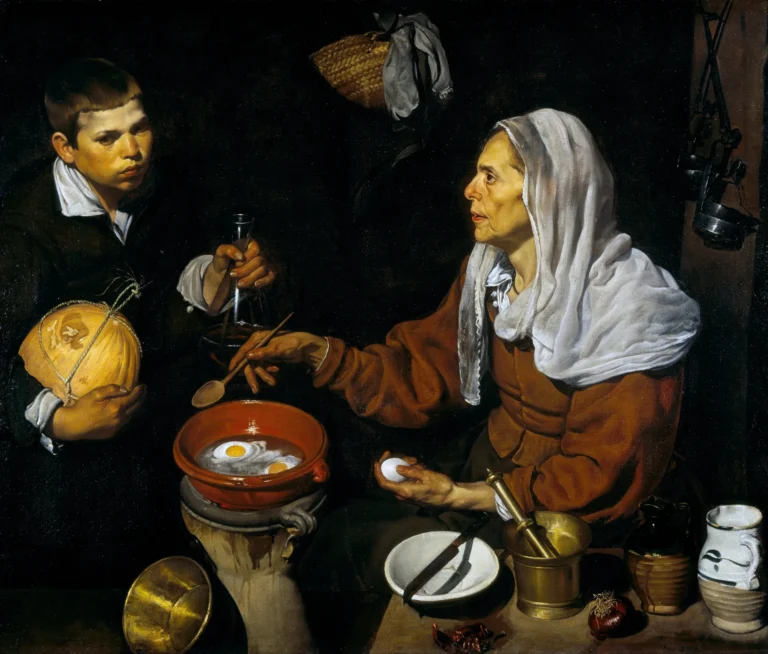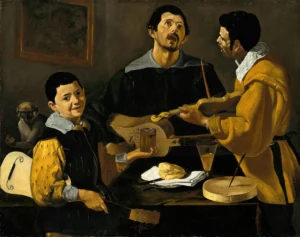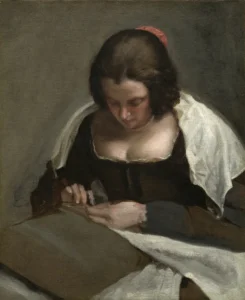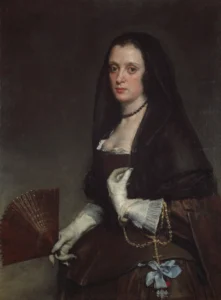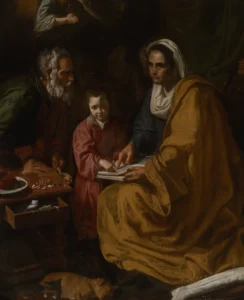An Old Woman Cooking Eggs
Diego Velázquez's An Old Woman Cooking Eggs is a captivating genre painting created when he was just a young artist in Seville, circa 1618. The scene depicts an elderly woman cooking eggs over a low fire, accompanied by a young boy with a melon and a carafe of wine. The painting’s chiaroscuro lighting dramatically emphasizes the figures, showcasing Velázquez’s exceptional ability to portray texture and humanity. This work represents the genre of 'bodegón,' a celebration of everyday life that invites viewers to engage with the simplicity and beauty of domestic scenes.
Circa 1618
About the Artwork
The creation of An Old Woman Cooking Eggs marks a crucial phase in Velázquez's artistic journey. Painted when he was only 18 or 19 years old, this work was instrumental in establishing his reputation as a master of realism and detail in Spanish art. The painting reflects the artist's unique approach to ordinary life, capturing a moment that many would overlook—a humble kitchen scene transformed into a work of art. The symbolism of the eggs, often associated with new beginnings, juxtaposes beautifully against the everyday activity, suggesting deeper narratives beneath the surface of simple life. This piece highlights how Velázquez's early work would lay the foundation for his later success as the leading painter in the Spanish court under King Philip IV.
Did You Know
Liked what you see? Add it to your collection.
Enjoyed reading? Share it.
... continued
An Old Woman Cooking Eggs
Key Details
Artist and Date: Diego Velázquez, painted when he was 18 or 19 years old, around 1618. Medium and Dimensions: Oil on canvas, measuring 100.5 cm x 119.5 cm (39.6 in x 47.0 in). Location: The painting is housed at the Scottish National Gallery in Edinburgh.
Composition and Style
The painting features an elderly woman cooking eggs in a clay vessel over a charcoal fire, accompanied by a young boy holding a melon and a carafe of wine. The scene is characterized by a strong, focused light source coming from the left, which highlights the subjects and utensils while casting the background into deep shadow. This use of chiaroscuro was a novel feature at the time and adds to the painting's realism. Velázquez's attention to detail is evident in the depiction of various textures and materials, such as the eggs cooking in oil, the wooden spoon, the glazed earthenware, and the reflective surfaces of the brass containers and the melon.
Themes and Symbolism
The painting is an example of a 'bodegón,' a type of Spanish genre scene often set in kitchens or taverns. These works focus on everyday life and ordinary people. The eggs in the painting can be interpreted symbolically, often associated with new life and the Resurrection in Christian tradition. However, the primary focus remains on the everyday activity and the artist's skill in capturing it.
Artistic Significance
An Old Woman Cooking Eggs is considered one of Velázquez's strongest early works and showcases his technical skill and realism, which were innovative in Spanish art at the time. This painting, along with others from his early period, contributed to his reputation and eventual appointment as painter to King Philip IV in Madrid in 1623.
Additional Elements
The painting includes subtle details such as the boy's serious gaze, the old woman's patient expression, and the contrast between youth and age, which adds a layer of depth to the scene. The background is dark and indistinct, contrasting with the often crowded backgrounds of Dutch kitchen scenes, highlighting Velázquez's unique approach to genre painting.




